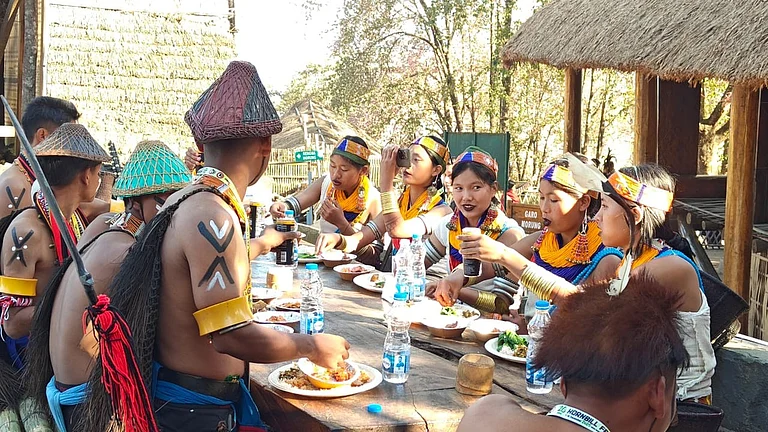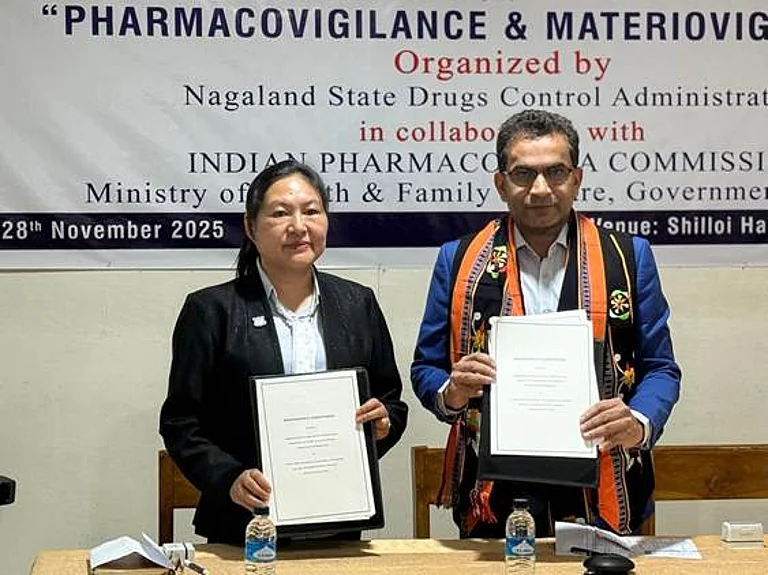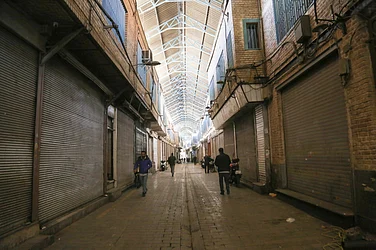Last year, when the killing of 14 civilians at the hands of Indian security forces at Oting village in Nagaland’s Mon district came to light, the immediate response of the Nagaland government was to stop the ongoing Hornbill Festival – a 10-day extravaganza organized by the state government to showcase the cultures of indigenous Naga tribes. It is held annually between the 1st and 10th of December at the Naga Heritage Village in Kisama, about 12 kms from Kohima.
It is perhaps the only time of year when Nagaland, a heavily militarized state, enjoys the attention of the nation as well as the world for its rich culture instead of its history of long-fought insurgency and resulting human rights violations. The festival is a significant contributor to the economy of the North-eastern state, and is not only a site of cultural celebration, but also one of contested identities across multiple registers: ethnic vs religious, and national vs state.

At loggerheads: The ethnic and the religious
Nagaland is the largest Baptist state in the world with over 90% of its population practicing Christianity. Before the American and European missionaries set foot in the hills of North-east India, the Nagas, a collective of 16 official tribes divided into several clans used to practice various forms of animism. The advent of Christianity alongside the British Raj attempted to create a binary among the Nagas: Christian Nagas who were educated and ‘reformed’ vs animist Nagas who were uneducated and ‘primitive’. Eventually, the growth of Christianity in the state led to the rejection of a range of traditional practices that concerned their rituals, feasts and festivals, attire, tattoos and jewellery which were quintessential aspects of the lives of Nagas.
However, these very practices are being popularized by the Hornbill Festival, now in front of a global audience.
Debuting in 2000, the Hornbill Festival is a vibrant space for reliving the past by exhibiting aspects of ethnic Naga culture without challenging the present. However, over the years, many performances in the festival have challenged a section of the church who sees it (the festival) as ‘un-Christian’.
For the last 32 years, Nagaland, as a Christian-majority state, has been under the Nagaland Liquor Total Prohibition Act of 1989 under the legislature of the state government. The power and influence of the Church is evident in the state, what with the government incurring huge losses in revenue due to the liquor ban. However, the Hornbill Festival provides a marketplace to buy and sell local rice beer at the morungs¬–traditional huts that serve as socializing spaces. Likewise, in 2007, a graphic performance of the reconstruction of an animist ritual involving an animal sacrifice was seen by many Baptist leaders as a clash with Christian culture. Five years later, the church erected a crucifix on top of a hill in Kisama village, and two years later, a chapel was constructed.
According to Dr. Theyie Keditsu, Kohima-based academic, writer and educator who has been working on the theme of Naga cultural identity, the Hornbill Festival mediates between indigenous pre-Christian Naga life and modern Christianity. It creates an opportunity for ‘indigenous Christianity’¬: bringing the past into the present.
Dr. Keditsu draws attention to a particularly interesting aspect of the Hornbill Festival, one that is emblematic of the coming together of the past and present: while most of the folk songs performed by cultural troupes are traditional in terms of tunes, music and construction, a lot of them incorporate Christian iconography and spirituality into the lyrics.
Speaking to Outlook, Dr. Keditsu said, “Our relationship with Christianity is a real disjunction between our traditional life and the current Christian belief system. What the Hornbill Festival does is, it has, in a way, allowed the Nagas to reconnect with their indigenous past, and because of this reconnection, it has mediated between current Christianity and our indigenous ways of life.”
Indian vs Naga nationalism
In 2014, right after his party won the Lok Sabha elections, Narendra Modi inaugurated the Hornbill Festival that year, thus becoming the first Indian Prime Minister to kick off a tribal festival in Christian-dominated Nagaland. Dressed in traditional Naga attire, Modi addressed the enormous crowd of people gathered at the event with “Kuknalim”, a word derived from two tribal dialects which means victory to Nagaland/Nagalim, to rapturous applause from a varied audience. Ironically, he completely side-stepped the region’s unresolved political issue arising out of a decades-long nationalist movement for a Naga state separate from India.
December 1, the opening day of the Hornbill Festival is also Naga Statehood Day; the festival, therefore, is a celebration of the creation of Nagaland as the 16th Indian state in 1963. The festival, partly funded by the centre, sees the active participation of representatives of the Indian government and senior security officials deployed in the stat, while carefully avoiding the strained relationship of the Nagas with the Indian government over questions of sovereignty and self-determination.
According to Arkotong Longkumar, academic and senior lecturer at the University of Edinburgh, the festival, notwithstanding the unresolved political situation, is “an attempt to project a distinct Naga identity that correlates with notions of indigenous peoples’ rhetoric of ‘preservation of culture’ and ‘self-determination’ as the cornerstone of national identity.”
In his paper, Visualizing National Life: the Hornbill festival as Culture and Politics, Dr. Longkumar writes, “The co-mingling of the forces of exclusion and inclusion is what makes the paradox of nationhood striking: the uneasy relationship between the Nagas and the Indian state, even though it is funding from New Delhi that enables such a festival. On the other hand, questions of indigeneity provide international legitimation that allow the Nagas to perform and represent a ‘distinct’ Naga culture and link with United Nations ideas of indigenous people’s rights of cultural uniqueness, self-determination, and sovereignty.”
The non-participation of 7 Naga tribes in the ongoing festival is a living example of the complex relationship that the Nagas share with the political system. Tribes from six districts boycotted the event to protest the Centre’s failure to create the “Frontier Nagaland” state. Spearheaded by the Eastern Nagaland People’s Organisation, a tribal organization, a people’s movement has been gaining momentum in the last decade for a separate state out of Nagaland by slicing off six districts of Eastern Nagaland.
“Hornbill Festival is one of the few occasions where the Nagas receive the attention of the nation as well as the world and so it is a platform that one needs to choose to raise any grievances. So, whether it is a form of protest from the people of Nagaland in general, or a section of people, it is literally the only time during the whole year where anyone is looking at Nagaland,” said a Kohima-based scholar who does not wish to be named.
While the Hornbill Festival started out as a government-funded celebration of indigenous culture and grandeur, the protest of the seven Naga tribes illuminates the festival’s evolution into a vibrant space charged with many identities at play where a sense of belongingness of indigenous peoples–both within the state as well as outside the framework of the state–is at stake.


























